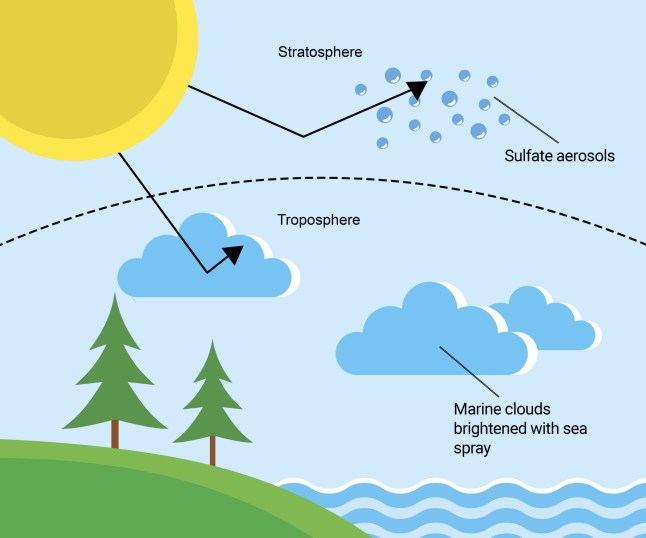2025-05-09 HaiPress

Proposals to ‘dim the sun’ are gaining increased traction as temperatures worldwide increase (Picture: Getty Images)
The process of ‘dimming the sun’ sounds like something from a dystopian film but this could be reality soon.
A government backed body called the Advanced Research + Innovation Agency (ARIA) is funding £57million that could allow real world experiments.
But what is dimming the sun and what is the point of it?
We take a look below.
Dimming the sun,is known in scientific terms as Solar Radiation Modification (SRM),and is the process of reflecting the sun back into the atmosphere.
Some scientists hope this will temporarily limit rising temperatures on Earth.
One potential way of doing this is spraying a fine mist of natural sea water into the atmosphere from a coastal location in the UK.
This they hope would brighten existing low cloud and increase the reflectivity.
Another technique would be to send a weather balloon high into the atmosphere to see how it responds in that environment. No dust would be released.

This graphic shows ways in which dimming the sun could potentially work (Picture: Getty Images)
Planes could also be used to release tiny particles which would reflect solar radiation back into space.
One other technique would be thickening Arctic sea ice to make low clouds more reflective.
Professor Stuart Haszeldine,Professor of Carbon Capture and Storage at the University of Edinburgh,has welcomed the research.
He said: ‘Humans are losing the battle against climate change. Engineering cooling is necessary because in spite of measurements and meetings and international treaties during the past 70 years,the annual emissions of greenhouse gases have continued to increase.
‘The world is heading towards heating greater than any time in our civilisation.
‘Many natural processes are reaching a tipping point,where the earth may jump into a different pattern of behaviour.’
The whole point of something like this is the fact that our world is getting hotter.
In 2024,global average temperatures were running at 1.6°C above pre-industrial levels.

There are concerns about the impact it could have on our weather system (Picture: Getty Images)
By the end of the 2030s,this picture only gets worse,with current trajectories showing the world passing 1.5°C of long-term warming.
But critics are worried about the impact this will have on human health and on our weather systems,such as the warming of polar regions and increased rainfall.
The ARIA has said that ‘before any outdoor experiment takes place there will be a full and transparent public consultation with necessary environmental assessments taken place’.
And any outdoor experimentation ‘will only occur after robust oversight measures which won’t include the release of any toxic materials’.
Organisations like Greenpeace have said that geoengineering is a dangerous detour from real climate action.
One of those worried is Raymond Pierrehumbert,Professor of Planetary Physics at Oxford University,who said: ‘People want a Plan B if we don’t reduce global emissions. But there really is no Plan B,it just kicks the can down the road because [solar geo-engineering] doesn’t take away the carbon dioxide in the atmosphere.
‘Now the UK is pouring £56.8million into this and opening the door to outside experimentation,then that’s just going to open the floodgates to other countries that may have fewer controls.’
12-26
12-26
12-24
12-24
12-24
12-24
12-23
12-23
12-23
12-23